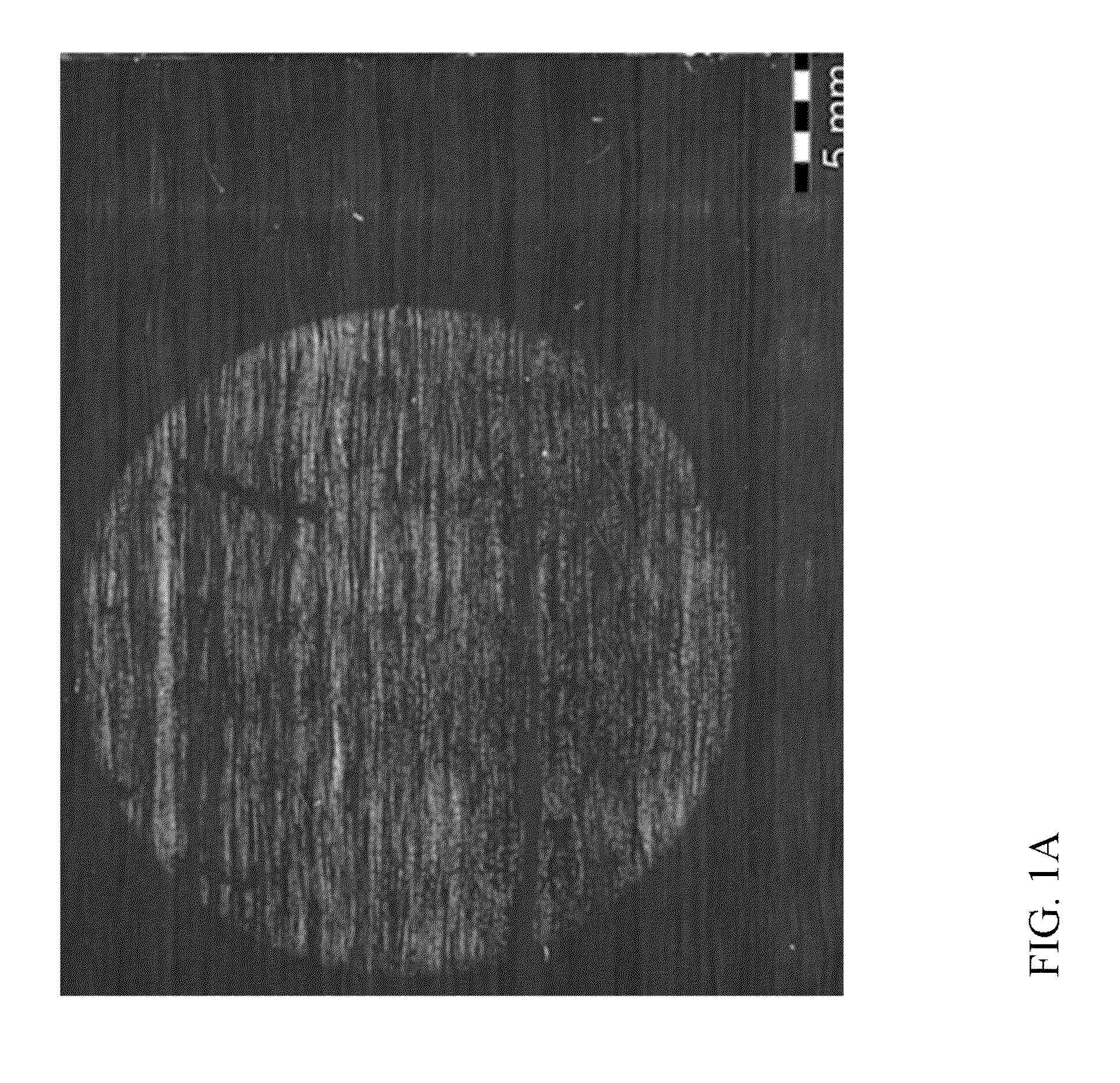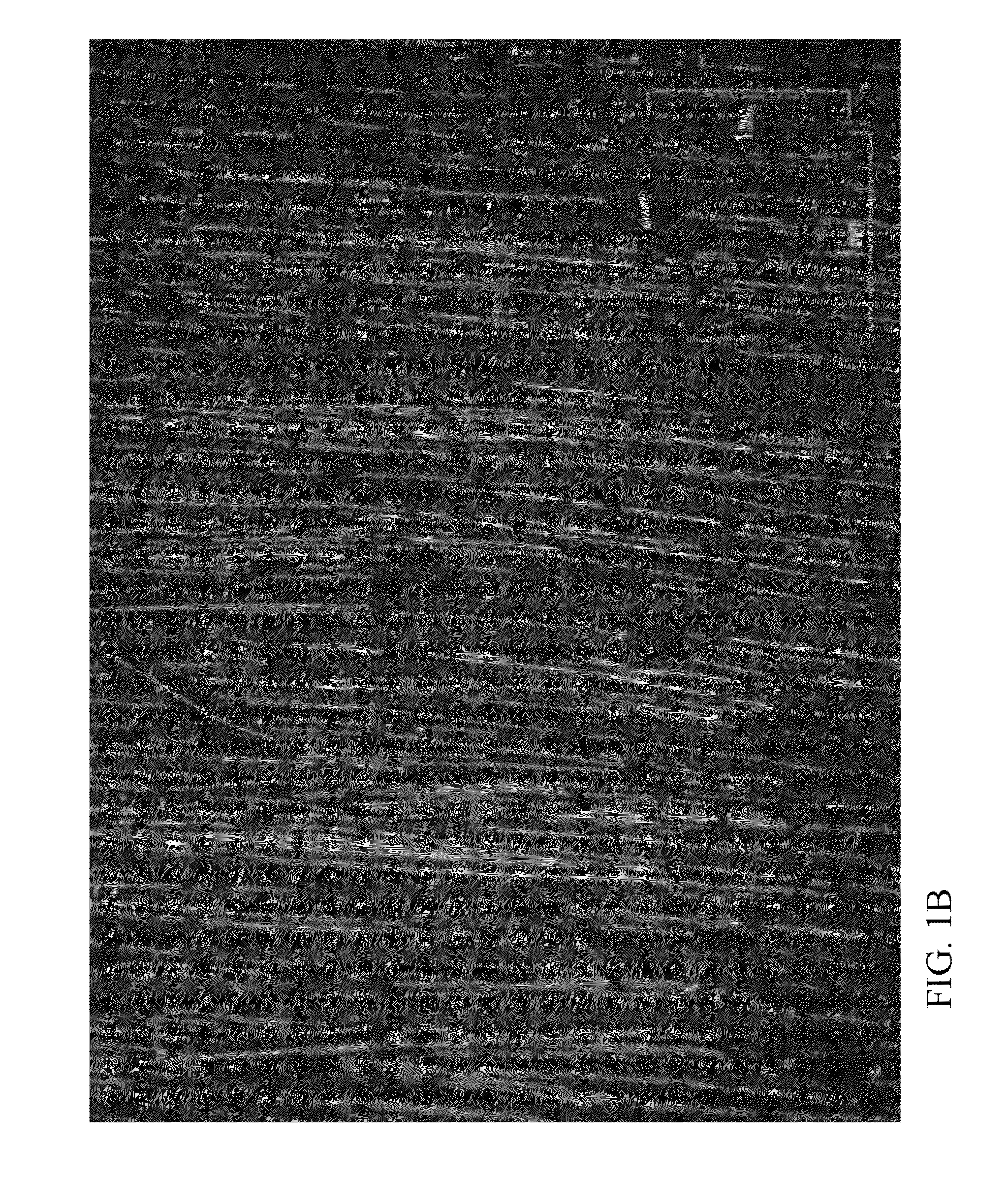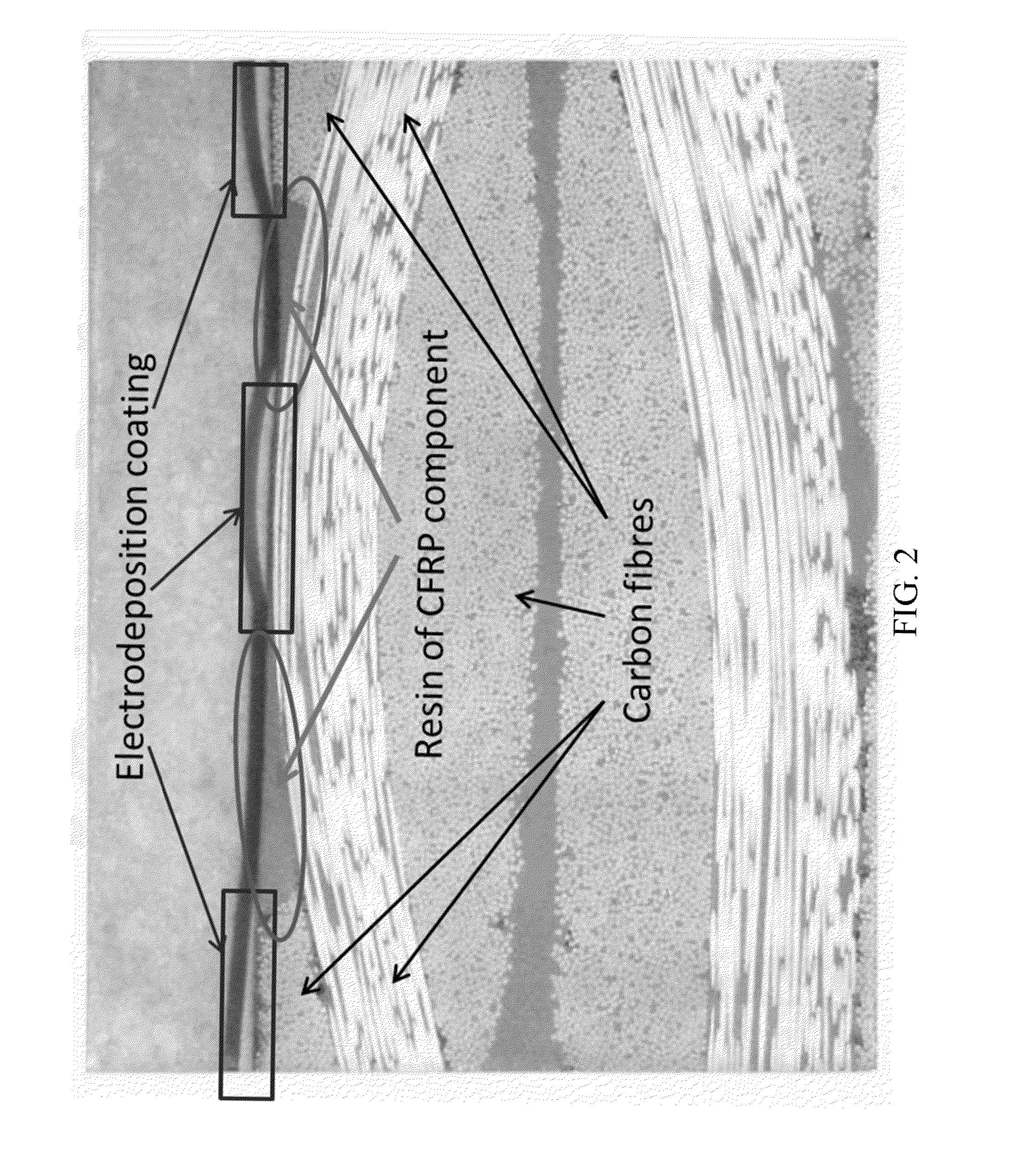Process for selective isolation of CFRP parts by electrodeposition coatings
a technology of electrodeposition coating and cfrp parts, which is applied in the direction of electrolytic coating, coating, electrophoretic coating, etc., can solve the problems of affecting the quality of cfrp parts, and requiring a lot of time and labor, so as to reduce the material used for repairing, reduce manufacturing efforts and costs, and facilitate selective repairing. defects
- Summary
- Abstract
- Description
- Claims
- Application Information
AI Technical Summary
Benefits of technology
Problems solved by technology
Method used
Image
Examples
example 1
[0046]CFRP components of a material comprising Fibredux 913C-815 with a resin content of 35-40% by volume was treated with peel ply and wet-ground.
[0047]These components were then treated either by anaphoretic electrodeposition or cathaphoretic electrodeposition under the following conditions to check for the influence of several parameters on the coating result:
[0048]Cathaphoretic Deposition:
[0049]Resin: acryl-based resin of ICI company
[0050]Temperature: 20° C.-40° C.
[0051]Voltage: 100 V-180 V
[0052]Duration: 0.5 minutes-2 minutes
[0053]Anaphoretic Deposition:
[0054]Resin: polyester-melamine-based resin of Herberts company
[0055]Temperature: 25° C.+ / −2° C.
[0056]Voltage: 130 V-170 V
[0057]Duration: 0.5 minutes-2 minutes
[0058]Under all conditions a satisfactory repairing and insulation of surface defects could be achieved.
[0059]An exemplary repairing of a CFRP component with anaphoretic deposition using the polyester-melamine-based resin can be seen in FIG. 2. FIG. 2 shows a CFRP componen...
example 2
[0061]Various CFRP components with various compositions were cleaned with a solvent after the initial treatment, and an electrodeposition coating was carried out with ATL Aerocron™ of PPG company at a temperature of 25° C. at voltages of 90 V-210 V for 2 minutes, with a ramp in the first 30 seconds and a constant voltage for 90 seconds.
[0062]As in example 1 under all conditions a satisfactory repairing and insulation of surface defects could be achieved.
PUM
| Property | Measurement | Unit |
|---|---|---|
| temperature | aaaaa | aaaaa |
| voltage | aaaaa | aaaaa |
| distance | aaaaa | aaaaa |
Abstract
Description
Claims
Application Information
 Login to View More
Login to View More - R&D
- Intellectual Property
- Life Sciences
- Materials
- Tech Scout
- Unparalleled Data Quality
- Higher Quality Content
- 60% Fewer Hallucinations
Browse by: Latest US Patents, China's latest patents, Technical Efficacy Thesaurus, Application Domain, Technology Topic, Popular Technical Reports.
© 2025 PatSnap. All rights reserved.Legal|Privacy policy|Modern Slavery Act Transparency Statement|Sitemap|About US| Contact US: help@patsnap.com



